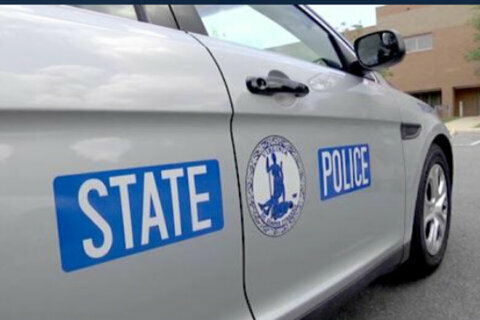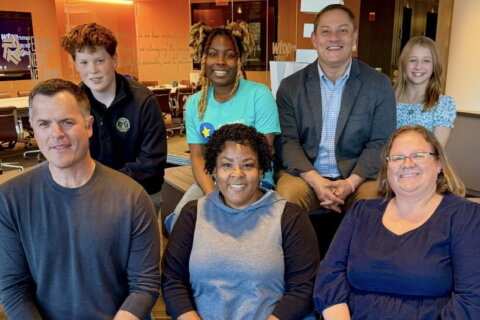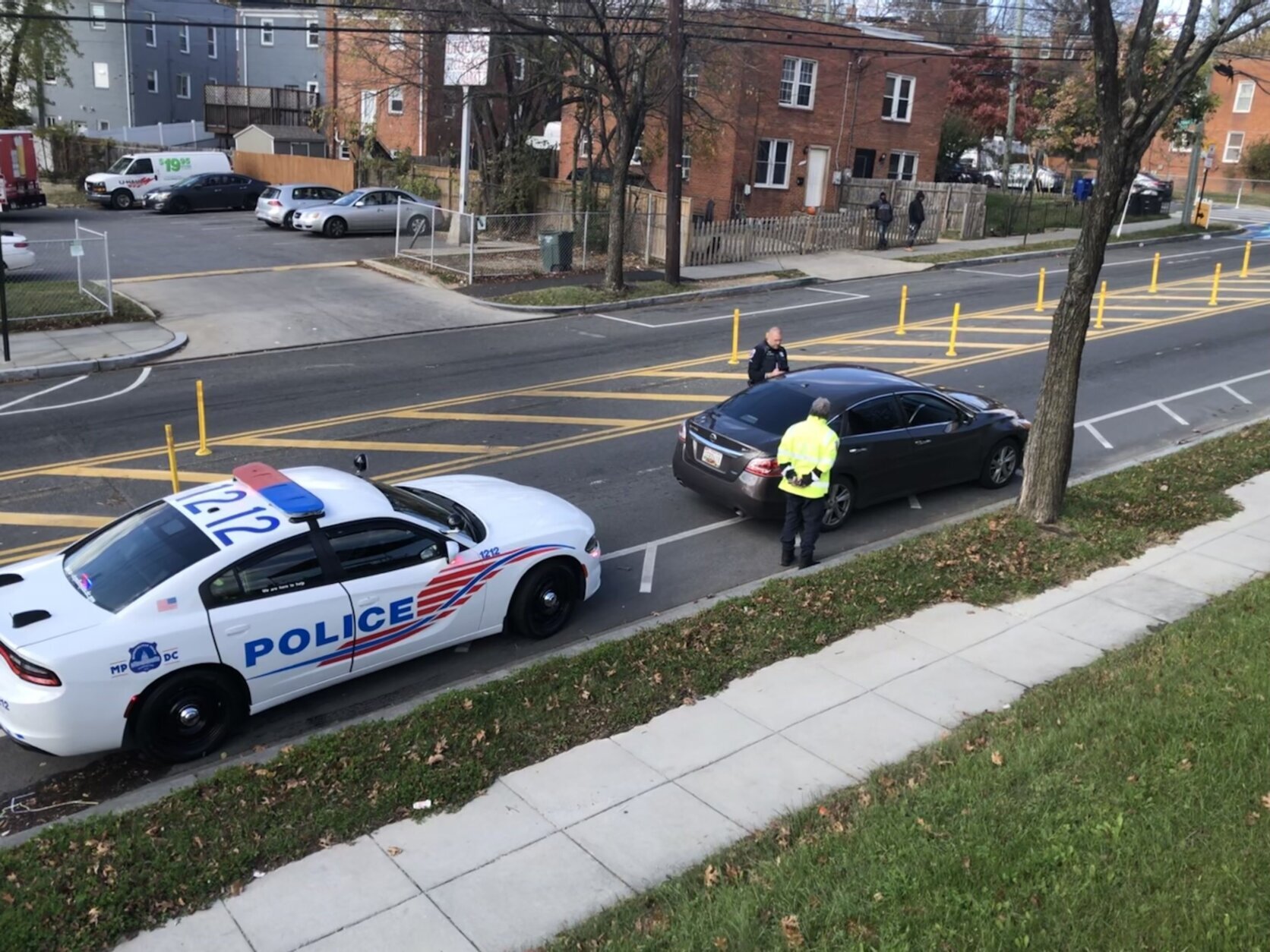
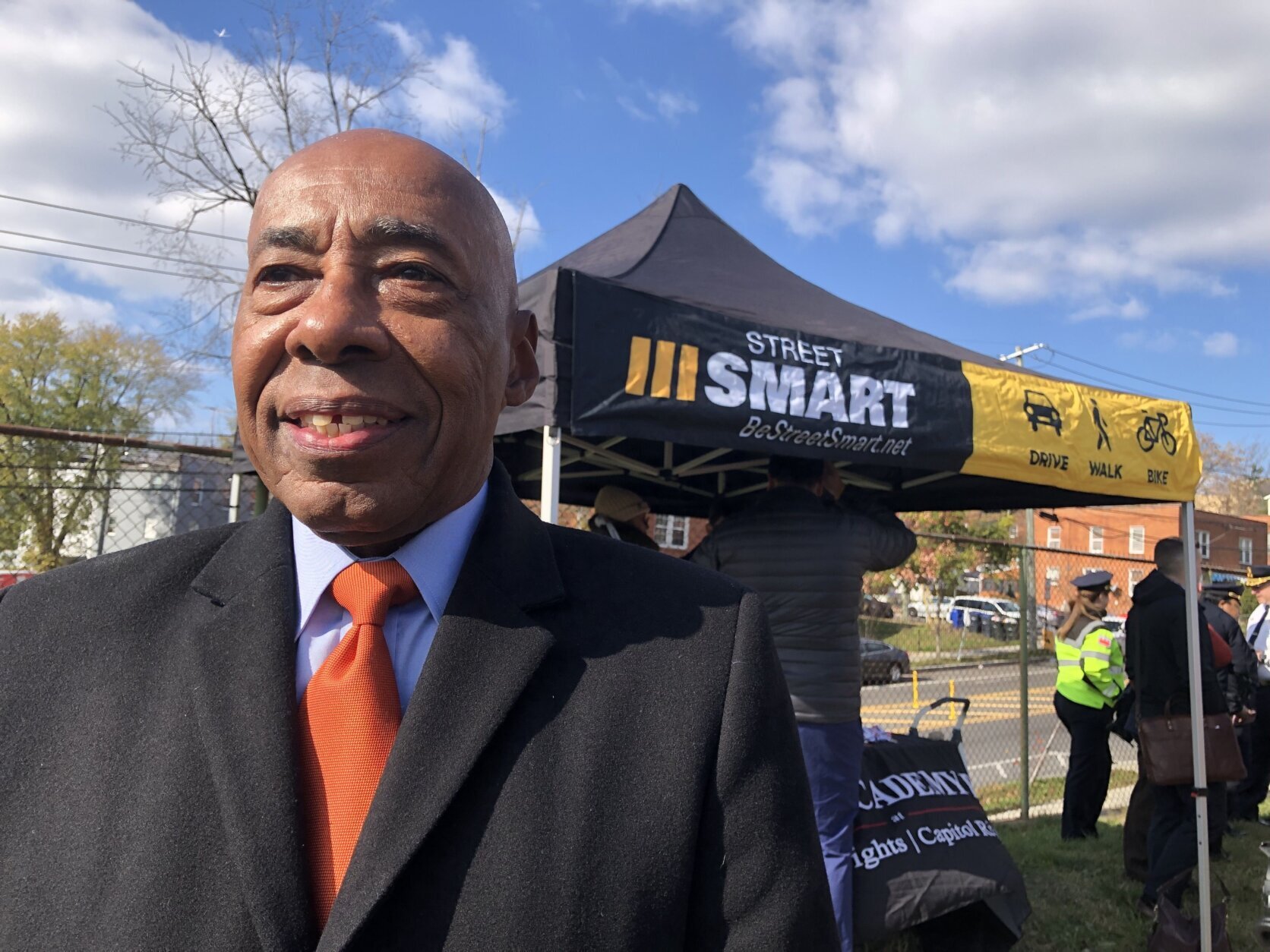
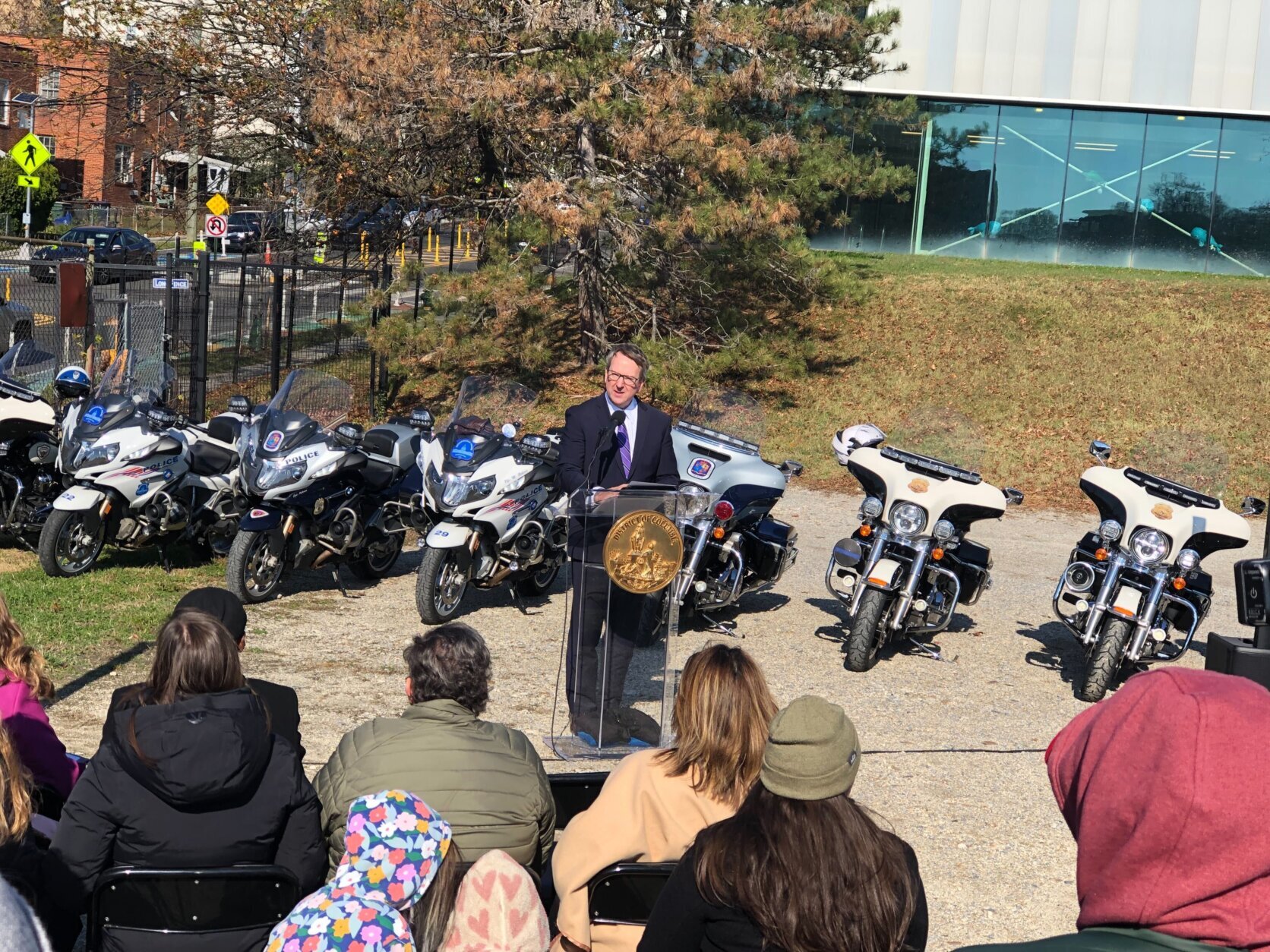
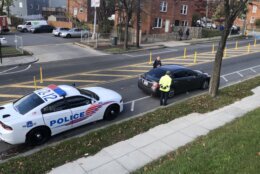
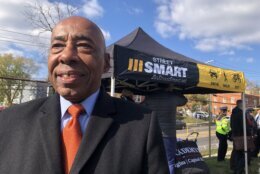
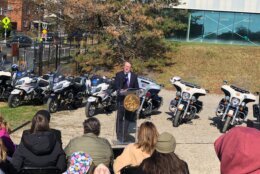
When was the last time you got a traffic ticket?
The Metropolitan Washington Council of Governments’ fall Street Smart campaign includes enhanced enforcement of traffic laws regionwide.
“We write tickets not to inconvenience people, we write tickets to save lives,” said Jason Bagshaw a commander with D.C. police.
“This enforcement and education will begin immediately and continue through Dec. 4. Traffic laws are in place for a reason – to keep everyone safe, whether they’re walking, biking, driving or even scooting around town,” he said.
Getting struck in a crosswalk by a dump truck that narrowly missed her daughter’s stroller convinced Helen Harris, of Arlington, to become a traffic safety advocate.
While Harris’ daughter was unharmed, she had a leg amputated above the knee. Four years later, every day is still a challenge, she said, and the crash affected her children, spouse, family and members of her community.
“I would like to take this opportunity to remind everyone to drive carefully and pay attention when you’re behind the wheel,” Harris said at Thursday’s campaign launch in Southeast D.C.
“Nothing matters more than what is in front of you when you’re driving,” Harris said.
Pedestrian deaths in 2021 reached a 40-year high nationwide.
In Virginia, comparing 2022, so far this year with 2021 at this time, there has been a 34% increase in walkers and cyclists being killed in traffic, according to John Saunders, the director of Highway Safety for the Virginia Department of Motor Vehicles.
“What we’re seeing is people not making good choices,” Saunders said. “And bad choices have consequences. You may get away with it once, twice, 100 times, but there’s one time that you may kill yourself or kill someone else on our roadways.”
Saunders said the way to change people’s behavior is by changing their thinking to care more about others.
“We’re all in this human race together, and we have a responsibility to each other to do all we can to get everyone home safely, so no table is empty this Thanksgiving or this holiday season,” Saunders said.
Data from the National Highway Traffic Safety Administration shows that 75% of pedestrian fatalities in the U.S. occur in the twilight and in the dark. The fall launch of Street Smart corresponded with the time of the rush-hour drive home — sundown at 4:52 p.m.
“As a community, we can help to reverse the nationwide trend of record pedestrian deaths during the fall season by knowing and obeying the traffic laws and speed limits in the region, and making our Street Smart tips a part of everyone’s transportation routine,” said COG Executive Director Chuck Bean.
“We all have to work together to reach our goal of zero pedestrian and bicyclist deaths each year,” Bean said.
More than a quarter of the total traffic deaths in the D.C. region are walkers and cyclists. To support its Street Smart campaign, the Council of Governments encourages investments in sidewalks, bike lanes and other improvements.
D.C.’s effort to reach its Vision Zero goal of zero traffic deaths includes traffic engineering adjustments being funded in part by President Joe Biden’s bipartisan infrastructure law.
“Everything that we are talking about at COG – building safer streets – and the work of the infrastructure task force (providing recommendations for how to spend the federal funding) overlaps,” D.C. Mayor Muriel Bowser said.
“We will expedite the redesign of 30 corridors that have been identified as high-injury corridors,” Bowser said. “We know from our data, if we improve these corridors, we will save lives.”
Some of what D.C. has been doing over the past year includes the installation of more than 900 speed humps in all eight wards, adding 53 stop signs to intersections, and expanding traffic control officer and crossing guard numbers by nearly 70 people.
“And, we’ve lowered speed limits on corridors like Connecticut Avenue and New York Avenue to make them safer for all who use them using all modes,” Bowser said.
Street Smart has some tips for drivers, walkers and cyclists.
If you’re driving
- Slow down and obey the speed limit.
- Stop for pedestrians at crosswalks.
- Be careful when passing buses or stopped vehicles.
- When turning, yield to people walking and biking.
- Look for bicyclists before opening your door.
- Allow at least 3 feet when passing bikes.
- Avoid using your cell phone and never text while driving.
- Be especially careful if you drive an SUV or pickup truck—crashes involving high profile vehicles more often result in the death or serious injury of people walking and biking.
If you’re walking
- Cross the street at the corner and use marked crosswalks when they’re available.
- Use the push-buttons.
- Wait for the walk signal to cross the street.
- Watch for turning vehicles.
- Before crossing, look left, right and left again.
- Be visible. Wear something light or reflective after dark.
- Watch out for blind spots around trucks and buses.
- Avoid using your cell phone while you’re crossing the street.
- On an off-street trail, obey all posted signage and approach intersections with caution.
If you’re biking
- Obey signs and signals.
- Never ride against traffic.
- Ride in a straight line at least 3 feet from parked cars.
- Use hand signals to tell drivers what you intend to do.
- Wear a helmet.
- Use lights at night and when visibility is poor.
- On an off-street trail, obey all posted signs and approach intersections with caution.



